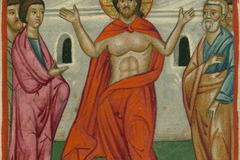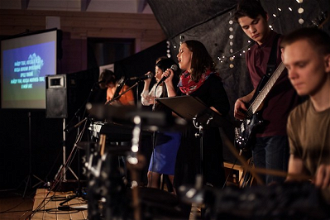Vatican lifts marriage ban on Eastern Catholic priests in diasphora

Ruthenian Church of St Michael the Archangel, Pittston, Philadelphia
Pope Francis has approved a decree, signed by Cardinal Leonardo Sandri, Prefect of the Congregation for the Eastern Churches, lifting the ban on the ordination of married men to the priesthood in Eastern Catholic churches outside their traditional territories, (mostly in the United States, Canada and Australia). The decree was signed on 14 June and published later online in the Acta Apostolicae Sedis, the official periodical which documents Vatican rulings.
The Eastern Catholic Churches have traditionally been allowed to ordain married men. However after ordination, a priest is not allowed to marry - or indeed re-marry if his wife should die. In 1890, the Congregation for the Evangelization of Peoples introduced a marriage ban on Ruthenian priests living in the USA, in response to protests from Latin Rite Bishops at the time, Cardinal Sandri explained. In 1929, the Congregation extended the ban, 'Cum data fuerit' to South America and Australia.
Cardinal Sandri's decree notes that soon after the law was promulgated, "an estimated 200,000 Ruthenian faithful became Orthodox."
The document also notes that when Pope Benedict XVI issued Anglicanorum Coetibus, allowing for the reception of Anglican communities into the Catholic Church, he explicitly provided for the presence of married Catholic priests.
In 2012, Pope Benedict remarked that “the ministry of married priests is a component of the ancient Eastern traditions,” which he encouraged the Eastern Catholic churches to maintain.
Cardinal Sandri's statement follows:
The Plenary Session of the Congregation for the Eastern Churches, held from the 19th to the 22nd of November 2013 in the Palazzo Apostolico, treated the question fully and subsequently presented to the Holy Father the request to concede to the respective Church Authorities the faculty to allow pastoral service of Eastern married clergy also outside the traditional Eastern territory.
The Holy Father, in an audience granted to the Prefect of the Congregation for the Eastern Churches, December 23, 2013, approved the requestcontrariis quibuslibet minime obstantibus, (“to the contrary notwithstanding”)with the following modality:- in Eastern administrative areas (Metropolia, Eparchies, Exarchates) set up outside the traditional territories such a faculty is to be conferred to the Eastern Hierarchy, who will exercise it according to the traditions of the respective Churches. Also, they have the faculty to ordain Eastern married candidates coming from the respective territory with the obligation to inform beforehand in writing the Latin bishop of the candidate’s residence, in order to have his opinion and any relevant information.- in Ordinariates for the Eastern faithful without a proper Hierarch, such a faculty will be conferred to the Ordinaries, who will exercise it informing in concrete cases the respective Episcopal Conference and this Dicastery;- in territories where the Eastern faithful lack a specific administrative structure and are entrusted to the care of the Latin Bishops of the place, such a faculty will continue to be reserved to the Congregation for the Eastern Churches, who will exercise it in concrete and exceptional cases after hearing the opinion of the respective Episcopal Conferences.
Fr Robin Gibbons, Eastern Rite Chaplain for the Melkite Greek Catholics in Britain, commented: "The Second Vatican Council reaffirmed the autonomy of the legitimate and very ancient traditions of the Eastern Catholic Churches, sui iuris, that is self governing and independent sister churches in Communion with the Roman See. Unfortunately too often in the past that principle was not honoured in practice. The history of these churches with Rome has not always been one of mutual esteem.
In lands outside the traditonal Patriarchal territories of these Churches, such as North America, Canada, Latin America, Australia, New Zealand and such like, in other words the Diaspora, the Latin Church imposed rules and regulations on these ancient churches that were often foreign and inimical to their ancient traditions. One such was mandatory celibacy of the pastoral clergy and oversight of the eastern community by the `Latin Ordinary!
The story of what happened to one of these Churches in the USA, when permission from Rome was refused for married clergy, is a sad indictment of an autocratic, imperial system! One can easily discover the historical facts of such intransigence.
The present lifting of the ban on married eastern clergy in the diaspora is long overdue. It rights an ancient wrong, that of one Church assuming it has the power and potential to dictate to another legitimate, and let it be said SISTER, Church what it must do in a pastoral situation, ignoring legitimate tradition.
This lifting of the ban is perhaps one aspect of the humility of Pope Francis's vision of a Church united in diversity and respect. Some of those Eastern Catholic Churches are older than that of Rome itself! It is also an open acknowledgement of the legitimate diversity of the Universal Church in ts various communities and a reminder that clerical celibacy in the west is an imposed, not divine, mandate!
The vocation to celibacy is not higher than that of marriage, it is complimentary, being a sign of the eschatalogical nature of the Kingdom, as marriage is of creation and the `incarnation. In the East celibacy is the call of Monks and Nuns or single people, but it has never been tied to the pastoral ministry of Deacon or Priest, in fact the reverse is true, being connected to the `People of God' it is eminently natural and just and scriptural, that those who exercise pastoral care of others should also include those who are married.
Though this comes a bit late to right many wrongs, this prescription is a hopeful sign of new steps in pastoral ministry and will also build bridges with other Christian communities."
Eastern Catholic Churches make up a small percentage of the membership in the Catholic Church when compared to the Latin Church, which has over one billion members. The 2008 statistics collected by the CNEWA show that Syriac Christians make up 47% of Eastern Catholics and Byzantine Christians make up 46%. The three largest Eastern churches are the Byzantine Ukrainian Greek Catholic Church with 4.3 million members (25%), the Syriac Syro-Malabar Catholic Church at 3.9 million faithful (23%), and the Maronite Catholic Church with 3.29 million faithful (20%).
The Ruthenian Catholic Church which has about 646,243 members, grew among the Rusyn people living in Carpathian Ruthenia as a result of the missionary outreach of Saints Cyril and Methodius, who brought Christianity and the Byzantine Rite to the Slavic peoples in the ninth century. They lived in Carpathian Ruthenia - an area where the borders of present-day Hungary, Slovakia and Ukraine meet. The Ruthenians suffered persecution under the Communists and many emigrated to North America. Since the fall of the Iron Curtain the Church has seen a resurgence in numbers.



















